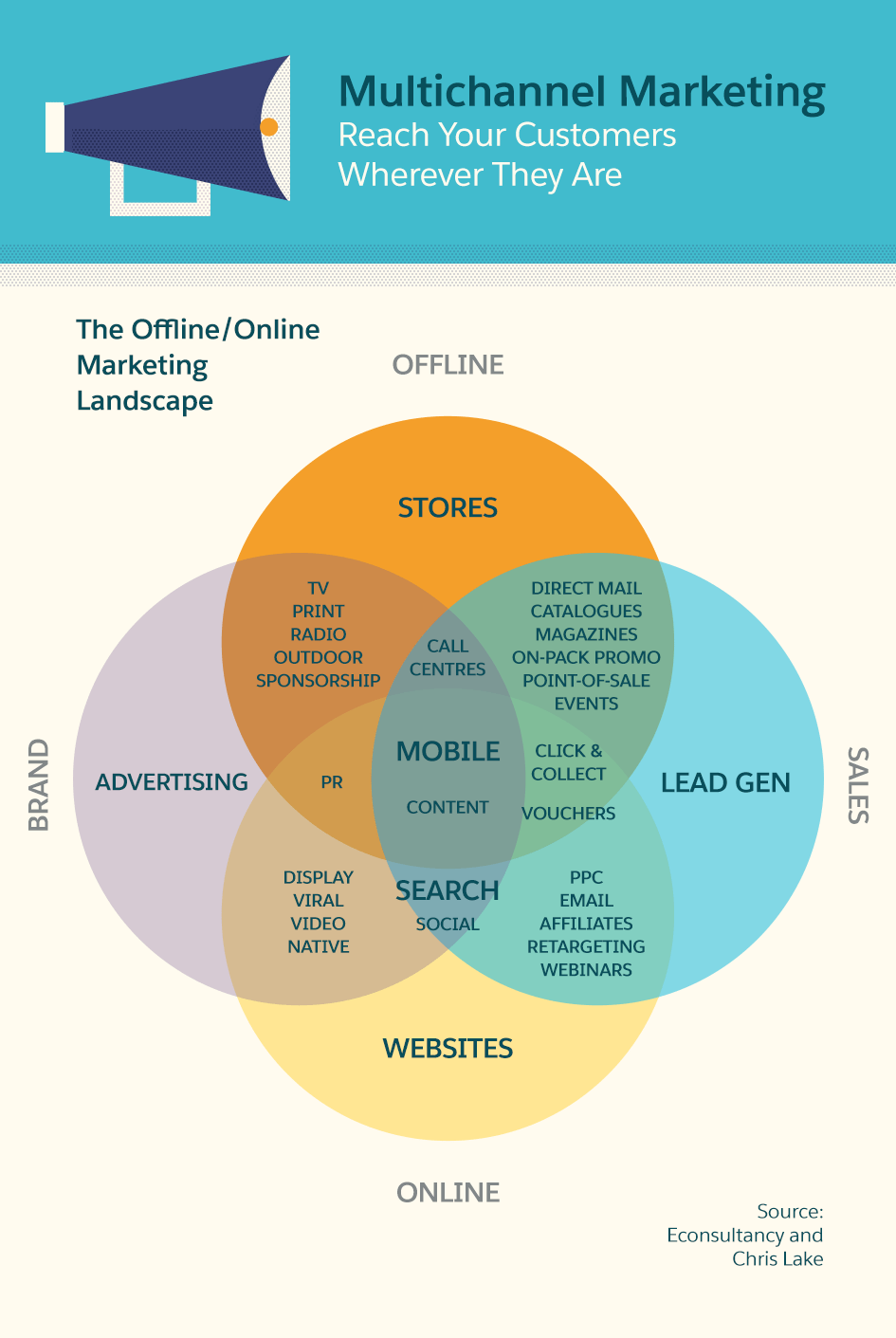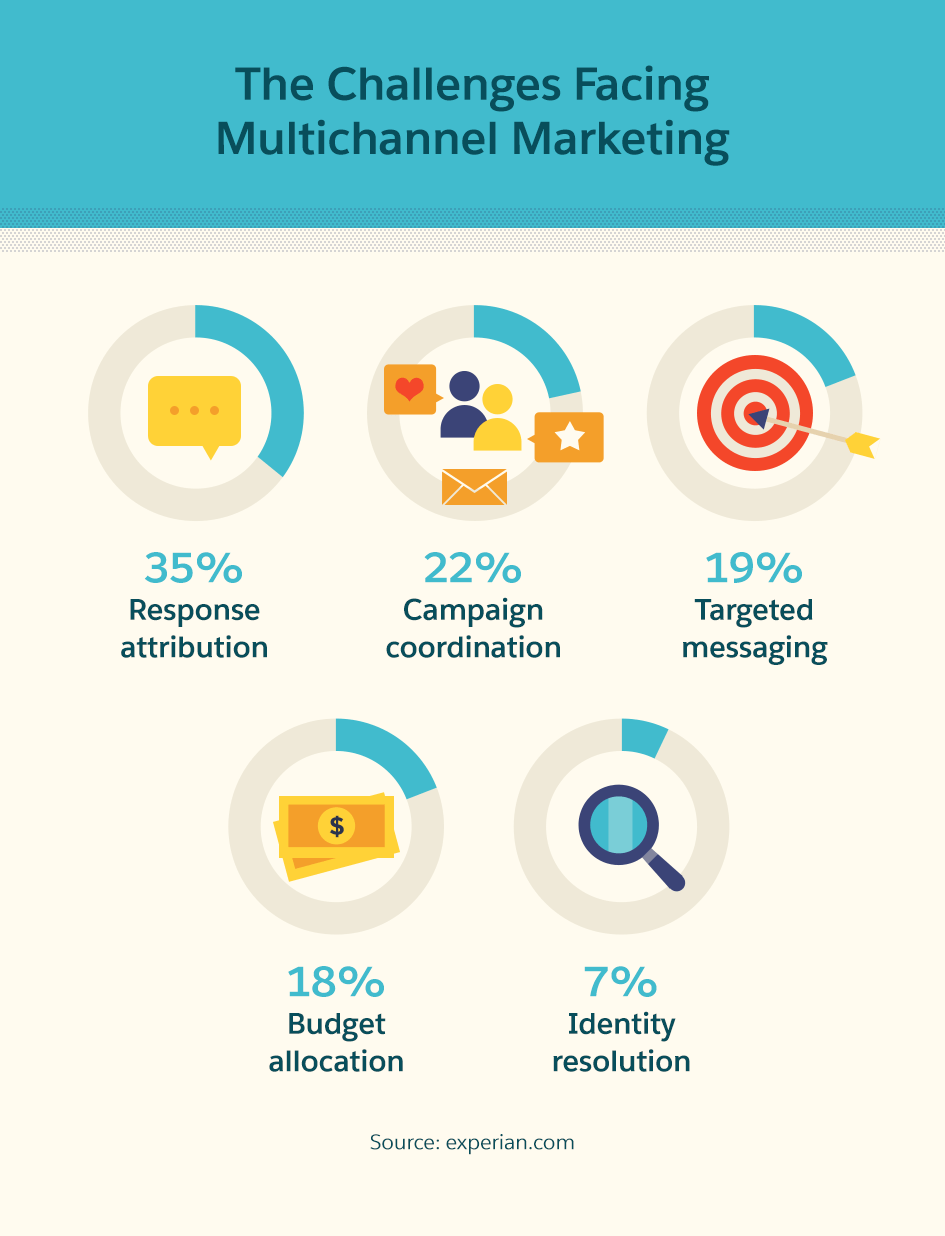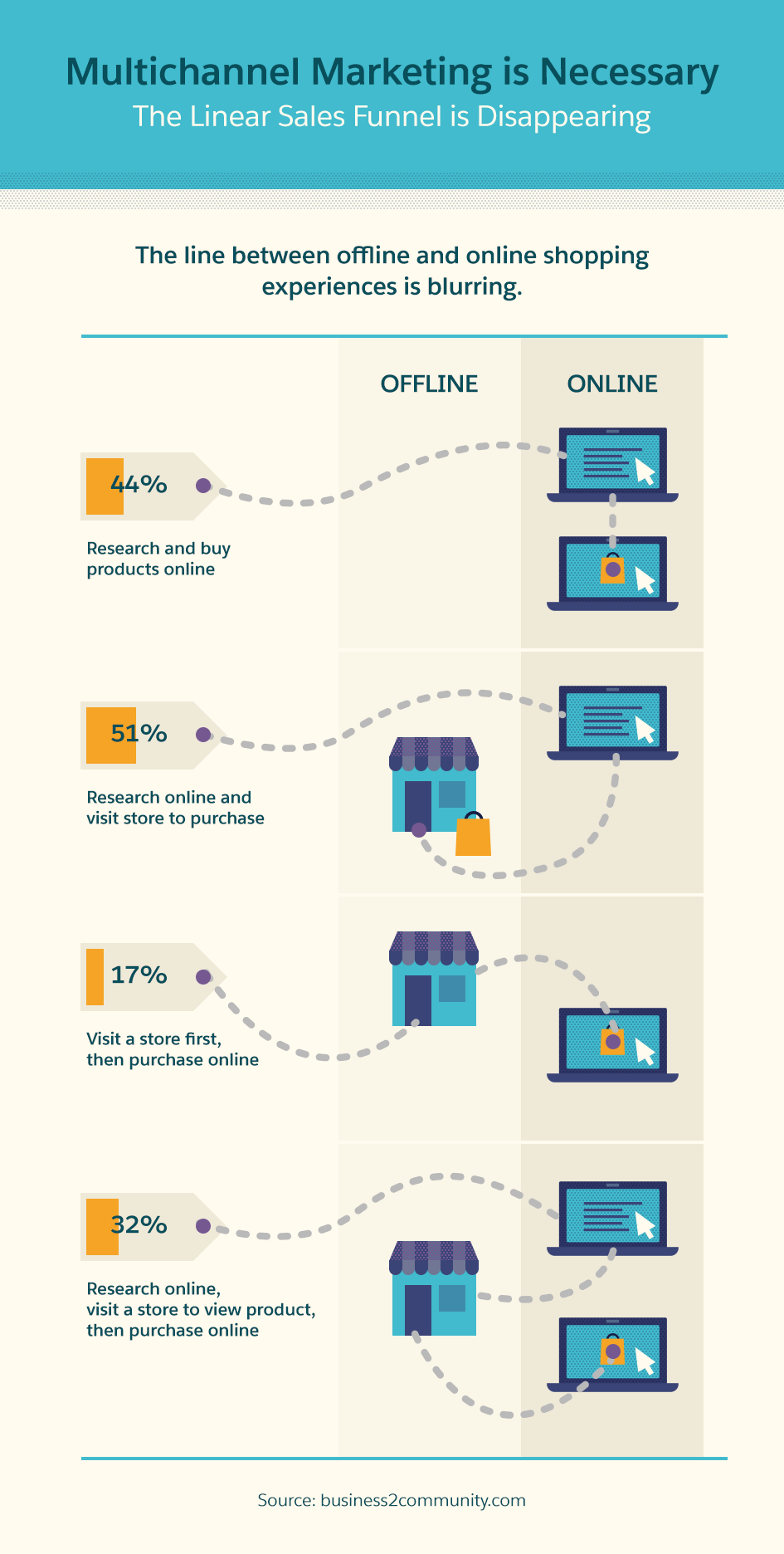Breaking Down Communication Barriers With a Multichannel Sales Approach
The digital revolution is changing B2B sales in a variety of ways. One study suggests B2B e-commerce sales will exceed $1.1 trillion in the U.S. by 2020. New digital channels of communication emerge each year, presenting new opportunities for communicating with prospects and forcing companies to spread their sales efforts across a variety of distinct platforms.
Some prospects are visual thinkers and enjoy viewing presentations on SlideShare. Others are more receptive to a sales pitch over the phone. Plenty can only be persuaded to purchase after connecting with you on LinkedIn, then email, and then a video conference. While every sales channel has its unique advantages, you yield better results when they complement, rather than compete with, each other.
Your customers work across multiple channels
Putting a multi-channel sales strategy to work for your organization is all about reaching your prospective buyers in the most engaging way possible. Most contemporary B2B buyers are involved in a complex buying cycle throughout their decision-making process. Furthermore, they make use of a variety of different channels to perform research and to communicate. If you focus your selling strategy on a single outlet, or if you lack a cohesive mechanism for coordinating your effort across various outlets, you’ll have a difficult time staying connected to your prospects when they need to hear from you the most.
Alternatively, when your outreach across various channels is designed well and guides the buyer through the sales process logically, you’ll be positioned to capture and hold their attention consistently. In addition, by employing a cohesive strategy across multiple channels, you’ll demonstrate to your prospects that your organization has a level of sophistication and credibility when delivering a satisfying customer experience across numerous outlets.

Exploit the unique attributes of each individual channel
In an age when high-speed internet access is becoming an increasingly defining factor in everyday life, we’re faced with an ever-expanding range of digital outlets through which it’s possible to engage prospects. This idea can seem daunting on the surface, because it implies a responsibility to master each and every channel and be constantly aware of new options as they gain popularity.
Forward-thinking sales organizations view this explosion of outlets as an opportunity, however. They see dozens of distinct channels, each offering specific attributes that will allow them to communicate more effectively with their customers. Each time a new technological tool or social media outlet comes along, innovative companies figure out how to maximize the value of these attributes.
Before email, there was no way to instantly discover what content pushed people on to the next stage of the sales funnel. In the days before social media became widespread, brand access to the kinds of demographic information Facebook stores about its users required decades of data gathering and persistence. In a world without Twitter, there was no easy way for B2B-focused organizations to engage their customers immediately following important news stories, which is especially crucial for companies who sell to customers in rapidly changing industries such as telecommunications and software development.
By learning what makes each channel special, you can use the tools available to consistently reach buyers at various touchpoints along their journey. With a successful multichannel strategy, your sales team will be ready to deliver the appropriate response for the customer as soon as they reach a new stage in the sales process, moving them rapidly through the sales cycle and increasing your productivity.
Better prospect targeting yields deeper and more engaging sales conversations
Customer segmentation is a vital part of most B2B-focused organizations, so much so that approximately 92 per cent of companies engage in the practice. Given its prominence, it’s no doubt that many leaders would like to streamline their segmentation strategy and maximize its contribution to the sales process.
Creating a robust multichannel sales mechanism is one way to increase the efficacy of your customer targeting campaign. By harnessing data from a variety of sources and learning more about what your customers are looking for from each specific channel, you’ll discover new ways to deliver value to your prospects. When you have an established presence across a variety of outlets, you can easily collect valuable customer information such as demographic data, behavioural stimuli, and user preferences. Your databases can then be updated frequently and reliably to power sales campaigns targeting your different customer segments.
Employ content and sales collateral to deliver value at all stages of the buying funnel
More sales leaders are discovering that using content to connect with customers isn’t the sole province of the marketing department. Creative sales teams are finding unique ways to deploy content that delivers value to the prospect while expediting their journey through the sales funnel; using a multichannel approach is the cornerstone of this strategy.
Sales professionals may be reluctant to create and share content across numerous channels, fearing they may overwhelm their customers with excessive marketing materials. Their biggest concern is that this would alienate prospects; indeed, it is unwise to promote sales content at every given opportunity. However, there are ways to carefully and strategically include sales collateral in your multichannel experience so that your sales reps connect with customers on a substantive level.
Additionally, multichannel content positions you to take advantage of the prominence of the mobile experience. Research indicates that over 50 per cent of B2B buyers use mobile devices to place orders, and much content that is produced for social channels is specially formatted for mobile apps. This means that you can create a consistent level of engagement regardless of how much time your customers spend on their mobile phones.
Keep the conversation fresh by switching up sales channels
If your sales team is only relying on a single channel, such as email or phone, to communicate with customers, you run the risk of creating monotonous sales conversations that can cause the process to stagnate. If you fail to change your methods every once in awhile, prospects become attuned to the very specific rhythms of the conversation and know exactly what to expect. It may not always be a deal breaker, but there are far more interesting opportunities for engaging with clients by peppering in communication from other channels.
Consider, for instance, sending your prospect five straight emails. Even if the content is different, they may assume that you’re sending them similar information after becoming accustomed to seeing your name in their inbox. Compare that approach to following up on Twitter after sending the first email, and then walking them through a compelling product demo over a web conference. Your prospect will be excited to reach the next stage of the journey and see what kind of value, and through which medium, you can contribute next.
Maximize the contributions of your sales team
If you limit your sales approach to a single channel of communication, you limit the abilities of your salespeople as well. Most B2B salespeople are persuasive over the phone, but it’s also possible they’re adept at communicating through other media and can create an even more compelling story for the prospect if they are allowed to use all available methods.
Perhaps a member of your sales team excels at communicating value within the strict character limits of Twitter, or maybe someone is a highly skilled public speaker and should be allowed to deliver webinars so that prospects can see them in action. Employing a multichannel sales strategy allows you to harness the talents of your staff to provide an exceptional experience for customers.
Test channel combinations, measure your results, and refine your sales communications approach
Anytime you can analyze data points in order to refine your strategy, it’s worthwhile. Fortunately, multichannel sales strategies offer numerous opportunities for you to test various approaches and modify your techniques until you find what works best for your organization.
For instance, your company may be in a prime position to take advantage of the credibility of LinkedIn posts to establish your team members as thought leaders. Meanwhile, tweets to your prospects that share news of developments in their industries may be largely ignored. Not all combinations of channels make sense for every company, and it’s worth going through the process to create a strategy that gets the most out of your limited resources.
Create a cohesive and seamless customer experience throughout the entirety of the sales journey
Ultimately, the defining purpose of a multichannel sales strategy is to create a customer experience that is logical and value-added from start to finish. It presents your salespeople with the chance to be there for the customer at every step, consistently engaging them in ways that will ultimately facilitate their journey through the sales funnel and motivate them to make repeat purchases.
The key is to think strategically about the process to maximize the overall impact of your sales campaigns. Your sales channels should work in harmony with one another to amplify the value that customers receive with each subsequent interaction. By using a multichannel sales approach, you can better engage every segment of customer that your company targets and deliver a superior customer experience.




Comments